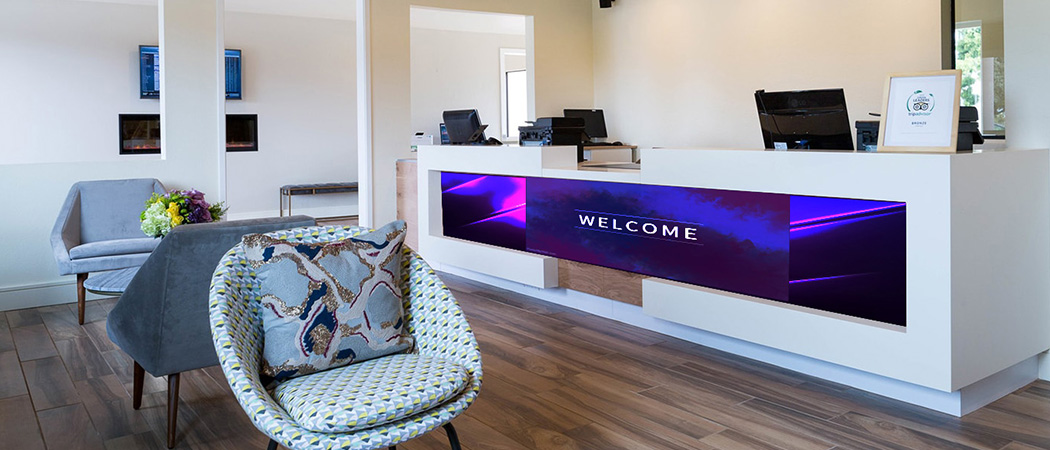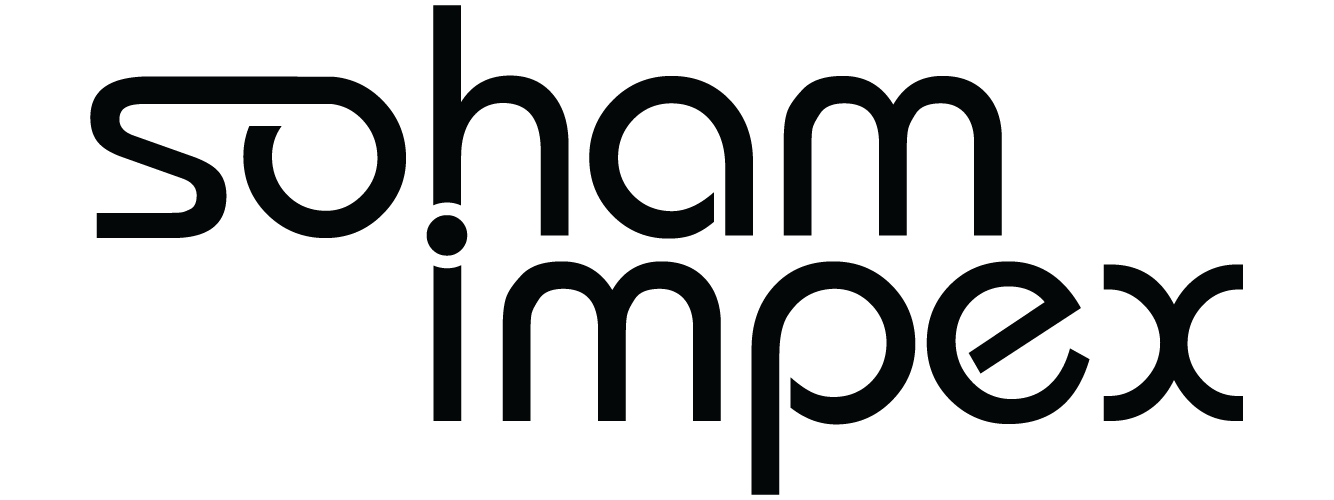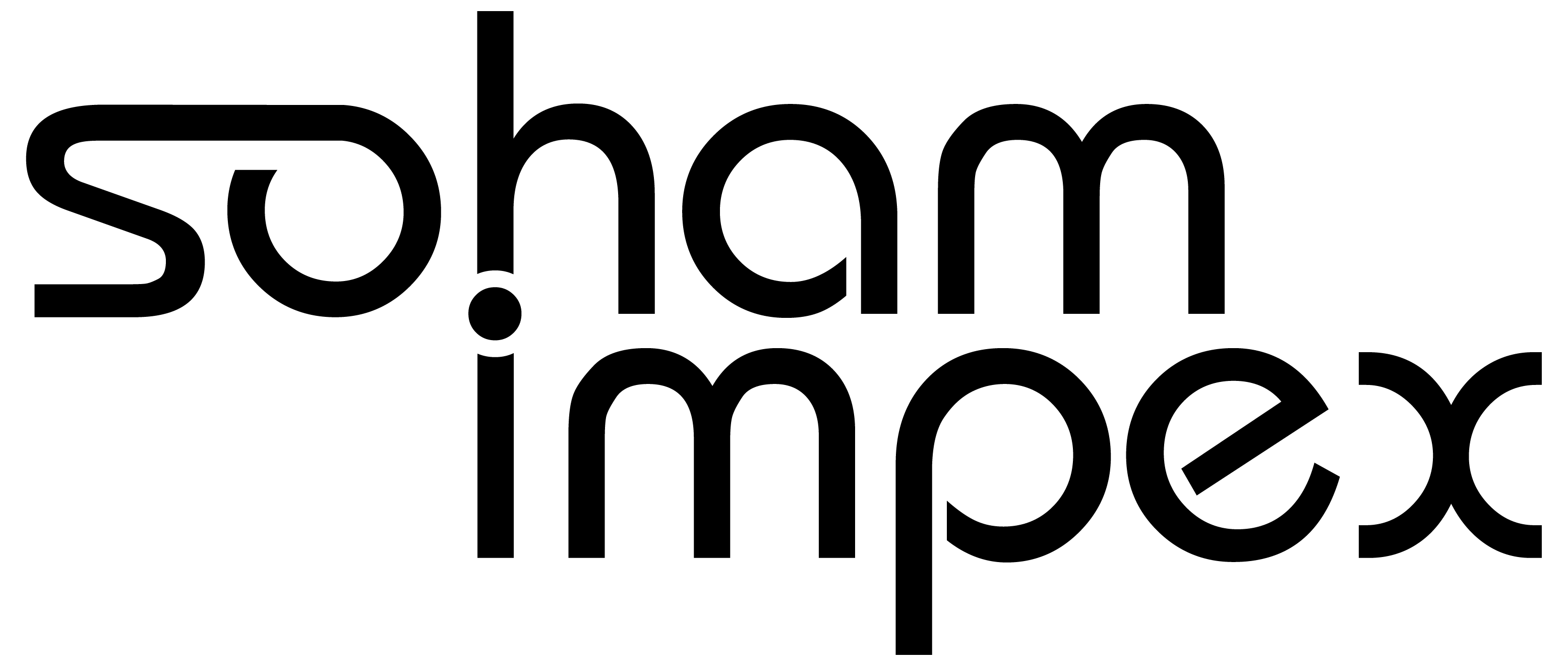
Active LED displays play a crucial role in enhancing the guest experience, improving operational efficiency, and boosting marketing efforts. From dynamic digital signage in hotel lobbies to interactive displays in restaurants and resorts, these LED systems allow for real-time communication, entertainment, and branding opportunities. LED displays offer a versatile, visually engaging way to convey information, promote services, and create a modern, tech-savvy environment that aligns with customer expectations.
Key Applications of Active LED Displays in Hospitality
1. Hotel Lobby and Reception Areas
Digital Welcome Boards: LED displays in hotel lobbies can greet guests with personalized messages, event schedules, and essential information about the property. Dynamic content, such as real-time weather updates, news, or travel information, can also be integrated.
Interactive Check-In Systems: Some hotels use interactive LED touch screens to allow guests to check in or out, make room service requests, or explore amenities available on-site. These displays can reduce wait times at the front desk and enhance convenience.
Branding and Promotional Displays: LED screens serve as a canvas to showcase the hotel’s brand identity, promote special offers, or advertise in-house services like spa treatments, restaurants, or tours.
2. Guest Room Displays
Smart In-Room Entertainment: Active LED displays in guest rooms can offer an enhanced entertainment experience. These displays often integrate with smart TVs, allowing guests to stream content, control room settings, or access hotel services via touchscreens or voice commands.
Personalized Content: Using data from guest preferences or loyalty programs, hotels can display personalized content, such as welcome messages, activity recommendations, or dining options suited to the guest’s profile.
Digital Concierge Services: LED displays act as a digital concierge, providing guests with information about hotel amenities, local attractions, transportation, and other services. Guests can interact with the display to book reservations, request housekeeping, or schedule activities.
3. Restaurants, Bars, and Event Spaces
Menu Displays: LED displays are commonly used in restaurants and bars within hotels to showcase menus, specials, and promotions. Dynamic content, such as daily specials, can be updated easily, and interactive displays allow customers to explore ingredients, nutritional information, or pairings.
Interactive Ordering: For a modern dining experience, some restaurants and cafes use LED displays with touch-screen capabilities to allow customers to place orders directly from their tables or self-service kiosks.
Event Advertising and Promotions: Hotels often host corporate events, weddings, or conferences, and LED displays help promote these events by showcasing details like schedules, speakers, or personalized welcome messages for attendees. Additionally, these displays can be used for real-time updates or announcements during events.
4. Wayfinding and Interactive Maps
Digital Signage for Navigation: Large properties, such as resorts or convention centers, use LED displays to provide interactive maps and wayfinding solutions. Guests can use these screens to navigate the property, find specific facilities, or learn about nearby attractions.
Event Information: In hotels that host conferences or large events, LED displays show live updates about room assignments, event schedules, speaker information, and other relevant details, ensuring attendees stay informed.
5. Outdoor LED Displays for Resorts and Large Hotels
Billboards and Digital Signage: For resorts and large hospitality venues, outdoor LED displays are used for advertising promotions, activities, or upcoming events. These bright, weather-resistant displays are visible from long distances and are particularly effective in promoting the resort’s offerings to potential guests.
Poolside or Entertainment Areas: LED displays in outdoor spaces, such as poolside lounges or outdoor bars, are used to broadcast entertainment, sports events, or music videos, enhancing the overall guest experience.
Nighttime Ambience: Resorts often use LED lighting displays to create a visually appealing nighttime atmosphere, enhancing outdoor areas like gardens, patios, or event venues with dynamic, color-changing light patterns.
6. Conference and Meeting Rooms
Interactive Displays for Presentations: Hotels that cater to business travelers and conferences often equip meeting rooms with LED screens for presentations, video conferences, or workshops. These displays offer high-resolution visuals, easy connectivity, and touch-screen capabilities to enhance the professional environment.
Real-Time Event Updates: Conference hotels often use LED screens outside meeting rooms to display schedules, speaker names, and session details. This helps guests stay on track and provides organizers with an easy way to update event information.
7. Fitness Centers and Wellness Areas
Interactive Workout Displays: In hotel gyms or wellness centers, LED displays can offer interactive workout sessions, virtual trainers, or yoga and fitness class schedules. These displays can also show real-time metrics like heart rate, calories burned, and progress tracking during workouts.
Promotional Wellness Content: Hotels with spas or wellness centers use LED displays to promote spa services, upcoming fitness classes, or special wellness packages.
8. Event Spaces and Ballrooms
LED Backdrops for Events: Large LED screens are often used in hotel ballrooms for weddings, corporate events, and concerts. These screens serve as dynamic backdrops for stage events, offering stunning visuals, live streaming of events, or personalized messages and displays.
Real-Time Streaming: LED displays can be integrated into live events, allowing the audience to view close-up shots of speakers, performers, or presentations, enhancing the overall experience for large audiences.
9. Sustainability and Energy Efficiency
Energy-Efficient Solutions: Modern LED displays consume less energy compared to traditional lighting and display technologies. Hospitality businesses focused on sustainability can use energy-efficient LED screens, contributing to green initiatives and reducing operating costs.
Environmental Awareness Campaigns: Hotels often use LED displays to communicate their sustainability efforts to guests, showcasing energy-saving practices, eco-friendly programs, and tips on how guests can contribute to reducing their carbon footprint during their stay.
Benefits of Active LED Displays in Hospitality
Enhanced Guest Experience: LED displays improve guest satisfaction by providing clear, dynamic, and personalized information. From digital check-ins to interactive maps, these displays help streamline the guest experience and reduce friction.
Improved Operational Efficiency: Hotels can use LED displays to reduce the workload on staff, automate routine tasks like check-ins, or provide guests with self-service options. This frees up employees to focus on personalized guest services and problem-solving.
Increased Revenue Opportunities: LED displays create opportunities for upselling and cross-promoting services. Hotels can advertise room upgrades, dining specials, spa services, and event packages on screens throughout the property, increasing visibility and potential revenue.
Branding and Customization: The flexibility of LED displays allows hotels to create unique, branded environments that reflect their identity. Customized content such as themed events, color schemes, and personalized guest messages help set the property apart.
Real-Time Communication: LED displays provide hotels with a dynamic way to update guests with real-time information, such as event changes, weather updates, or safety announcements. This ability to communicate instantly enhances both guest satisfaction and safety.
Attractive and Modern Aesthetic: Active LED displays offer a sleek, modern look that enhances the overall design of hospitality spaces. The vibrant colors and high-definition visuals provide an attractive focal point in lobbies, dining areas, and event spaces.
Conclusion
In the hospitality industry, Active LED displays are key to providing guests with a modern, engaging experience while improving operational efficiency. From enhancing lobby aesthetics and delivering personalized messages to providing real-time event updates and interactive services, LED technology enables hotels and resorts to elevate both the guest experience and their brand identity. With increasing integration of smart systems and sustainability initiatives, LED displays will continue to shape the future of hospitality
Products
Agency
Get In Touch
- Rajkot Gujarat India.
- +91 9974 601 712
- info@sohamimpex.co.in
Follow Us
Soham Impex has successfully built a presence in the Active LED Display for Advertising and Branding Purposes. We stand out with the help of our comprehensive LED design and build, catered to clients Pan-India.
Follow Us
Get In Touch
- +91 9824201712
- info@sohamimpex.co.in
- 150ft. Ring Road, Rajkot Gujarat India.


